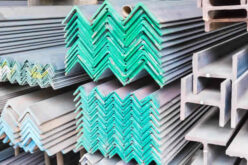The surface of stainless steel must be kept clean to avoid corrosion and rust. With proper cleaning procedures, you’re sure to attain good performance and extended life.
Because it is much less inexpensive to clean stainless steel than replace it regularly with other materials, the lower cost will pay dividends in the long run. A stainless steel metal bellow is much more expensive to replace than maintaining with proper cleaning to prevent corrosion. Learn how to clean stainless steel components in this brief guide.
General Cleaning
The best way to clean stainless steel is with soap, mild detergent, or ammonia solutions in warm water, applied with a soft cloth or nylon sponge. Sometimes, using a soft nylon pad will be required. The stainless steel will look better when it is wiped dry.
People frequently ask how often to clean their stainless steel. A good rule of thumb is to clean the metal when it is dirty to restore its original appearance. This may vary from four times a year for external applications to once a day for an item in hygienic or aggressive situations.
Here are a few specific situations when a different cleaning method will be required.
-
Rust Stains
If we’re just talking about a light ring and superficial staining, routine cleaning for a few days should take care of things. Likewise, you can remove light stains and moderate soiling with repeated cleaning.
You can remove severe rust stains best by swabbing the stain with a 10 percent solution of nitric acid. Swab the stain for 15 to 20 minutes and repeat if necessary.
A paste of fine household abrasive and a 10 percent nitric acid solution should take out very severe rust stains. Rinsing in ammonia or a bicarb solution (baking soda) must follow all acid treatments on stainless steel to get the acid from the material.
-
Tough Discoloration
Use domestic metal polish for discoloration. Chrome polishes for automotive parts are helpful too. Treat the entire surface to avoid the appearance of discolored patches.
other related articles of interest:
How to Preserve the Condition of a Stainless Steel Balustrade?
-
Heat Discoloration
The ease of removal depends on how badly the stainless steel is discolored. For moderate soiling and heavier staining, regular cleaning may prove successful.
A 10 percent solution of nitric acid and water and a reasonably coarse household abrasive cleaner can be used as a paste by rubbing the surface hard. Ammonia or sodium bicarbonate can be rinsed in after the acid treatment, followed by routine cleaning.
These are a few of the unique treatments that stainless steel requires in everyday home and industrial applications. Not all stainless steel is the same, but the cleaning of it is similar.
We hope this guide on how to clean stainless steel components has helped you figure out the best way to clean your stainless steel. With proper cleaning, the look of your stainless steel should last indefinitely.
Image Credit: by twenty20.com
end of post … please share it!
GUIDE: business buying steps
-------------------------------------------------------------------------------------------------------------
-------------------------------------------------------------------------------------------------------------
home remodeling reference (links to internal page)
 |
 |
 |
 |
| directory | photos | forms | guide |
Helpful article? Leave us a quick comment below.
And please share this article within your social networks.











